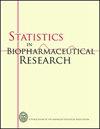编者注:关于利用真实世界数据进行临床试验和医疗产品开发的机遇和挑战的文章集合的特别部分
IF 1.5
4区 医学
Q3 MATHEMATICAL & COMPUTATIONAL BIOLOGY
引用次数: 0
摘要
关于真实世界数据(RWD)和真实世界证据(RWE)如何在医疗保健决策中发挥作用,特别是在医疗产品监管中,RWD是从各种来源(例如,观察性研究、电子健康记录、产品和疾病登记等)常规收集的与患者健康状况和/或医疗保健提供有关的数据,RWE是关于RWD分析得出的医疗产品的使用和潜在益处或风险的临床证据(美国食品药品监督管理局(FDA)2017)。在临床试验或医疗产品开发的设计和分析中统一外部数据源并不是一个新想法。在评估医疗产品的临床试验可行性时,经常使用外部数据源来寻找新的假设/发现,表征相关患者群体和亚群体,了解未满足的需求,确定关于潜在资格标准对试验可行性影响的重要假设。在临床试验的方案制定过程中,它们被用于估计医疗产品的预期效果大小,计算样本量,并支持患者招募,在试验进行过程中,可能被用于更改或修改试验方案或设计,有时甚至停止试验。在医疗产品开发结束时,通常会对疗效和安全性进行全面的综合分析,包括与产品疗效和安全相关的其他信息来源。此外,在日本,有一个非常独特的监管决策框架来评估未经批准的医疗产品的标签外使用,即所谓的“基于公共知识的应用”(日语为“Kochi Shinsei”)(卫生福利部(MHLW)1980)。如果通过出版物确认医疗产品新适应症的疗效和安全性在医学和药理学领域众所周知,赞助商可以在不进行(额外)临床试验的情况下提交申请。该框架是基于RWD/RWE的监管决策的一个伟大实践。现在发生了什么?与目前的做法有什么不同?由于最新的先进技术,可以更容易地“实时”收集和存储大量与健康相关的数据。预计RWD/RWE可以用于本文章由计算机程序翻译,如有差异,请以英文原文为准。
Editor’s Note: Special Section on a Collection of Articles on Opportunities and Challenges in Utilizing Real-World Data for Clinical Trials and Medical Product Development
There have been increasing discussions on how real-world data (RWD) and real-world evidence (RWE) can play a role in health care decisions, particularly in medical product regulation, where RWD are the data relating to patient health status and/or the delivery of health care routinely collected from a variety of sources (e.g., observational studies, electronic health records, product, and disease registries, etc.), and RWE is the clinical evidence regarding the usage and potential benefits or risks of a medical product derived from analysis of RWD (Food and Drug Administration (FDA) 2017). Unitizing external data sources in the design and analysis of clinical trials or medical product development is not a new idea. In assessing clinical trial feasibility of a medical product, external data sources have often been used to find new hypotheses/findings, characterizing relevant patient populations and subpopulations, understanding unmet need, identifying important assumptions about the impact of potential eligibility criteria on trial feasibility. At the protocol development of the clinical trials, they have been used to estimate the expected effect size of the medical products, to calculate the sample size, and to support patient recruitment, and during the trial conduct, they might be used to change or modify the trial protocol or designs, or sometimes to stop the trial. At the end of the development of the medical product, in general, comprehensive integrated analysis of the efficacy and safety has been conducted, including other sources of information relevant to efficacy and safety of the product. Furthermore, in Japan, there is a very unique regulatory decision-making framework for evaluating off-label use of unapproved medical products, so called “Public KnowledgeBased Applications” (“Kochi Shinsei” in Japanese) (Ministry of Health and Welfare (MHLW) 1980). A sponsor is able to submit an application without conducting (additional) clinical trials, if efficacy and safety for a new indication of the medical product are recognized to be well known in the medical and pharmacological field through publications. This framework is a great practice of regulatory decision-making based on RWD/RWE. What is happening right now? What is different from current practice? Due to the latest advanced technologies, it is much easier to gather and store huge amounts of health-related data in “real time.” It is expected that RWD/RWE can be used into
求助全文
通过发布文献求助,成功后即可免费获取论文全文。
去求助
来源期刊

Statistics in Biopharmaceutical Research
MATHEMATICAL & COMPUTATIONAL BIOLOGY-STATISTICS & PROBABILITY
CiteScore
3.90
自引率
16.70%
发文量
56
期刊介绍:
Statistics in Biopharmaceutical Research ( SBR), publishes articles that focus on the needs of researchers and applied statisticians in biopharmaceutical industries; academic biostatisticians from schools of medicine, veterinary medicine, public health, and pharmacy; statisticians and quantitative analysts working in regulatory agencies (e.g., U.S. Food and Drug Administration and its counterpart in other countries); statisticians with an interest in adopting methodology presented in this journal to their own fields; and nonstatisticians with an interest in applying statistical methods to biopharmaceutical problems.
Statistics in Biopharmaceutical Research accepts papers that discuss appropriate statistical methodology and information regarding the use of statistics in all phases of research, development, and practice in the pharmaceutical, biopharmaceutical, device, and diagnostics industries. Articles should focus on the development of novel statistical methods, novel applications of current methods, or the innovative application of statistical principles that can be used by statistical practitioners in these disciplines. Areas of application may include statistical methods for drug discovery, including papers that address issues of multiplicity, sequential trials, adaptive designs, etc.; preclinical and clinical studies; genomics and proteomics; bioassay; biomarkers and surrogate markers; models and analyses of drug history, including pharmacoeconomics, product life cycle, detection of adverse events in clinical studies, and postmarketing risk assessment; regulatory guidelines, including issues of standardization of terminology (e.g., CDISC), tolerance and specification limits related to pharmaceutical practice, and novel methods of drug approval; and detection of adverse events in clinical and toxicological studies. Tutorial articles also are welcome. Articles should include demonstrable evidence of the usefulness of this methodology (presumably by means of an application).
The Editorial Board of SBR intends to ensure that the journal continually provides important, useful, and timely information. To accomplish this, the board strives to attract outstanding articles by seeing that each submission receives a careful, thorough, and prompt review.
Authors can choose to publish gold open access in this journal.
 求助内容:
求助内容: 应助结果提醒方式:
应助结果提醒方式:


